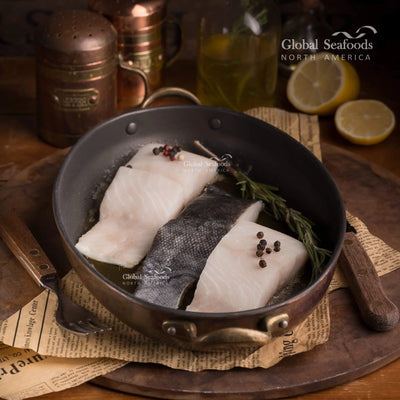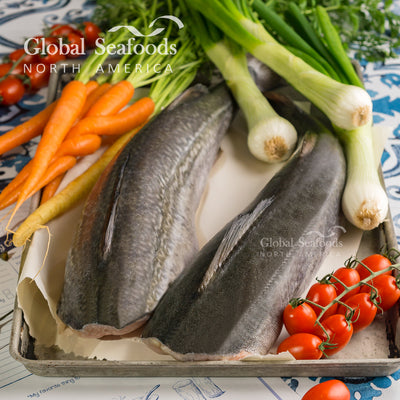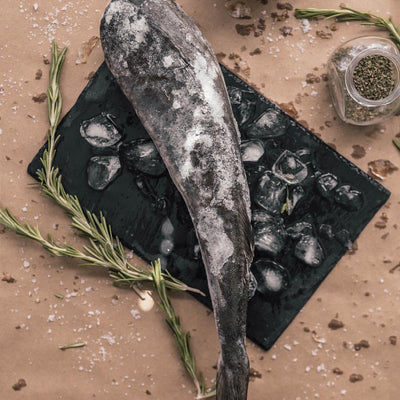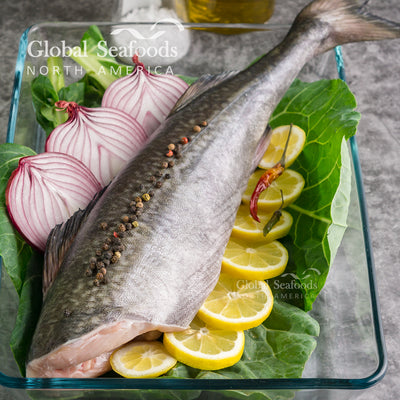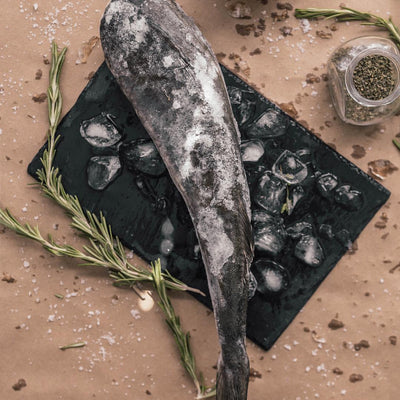Sablefish vs. Salmon: Which Is Healthier and More Delicious?

Sablefish vs. Salmon: A Complete Nutritional Comparison
Are you torn between sablefish and salmon for your next seafood dish? Both of these fish are incredibly nutritious and beloved for their unique flavors. Whether you’re a fan of salmon’s versatility or sablefish’s rich, buttery texture, this guide will help you understand their differences and choose the best option for your meal.
Why Compare Sablefish and Salmon?
Sablefish (also known as black cod) and salmon are popular choices for seafood lovers because they are both rich in omega-3 fatty acids, packed with vitamins, and versatile in the kitchen. However, each fish has distinct characteristics that make it suitable for specific recipes, nutritional needs, and flavor preferences.
To find premium-quality options for either fish, check out these products from Global Seafoods:
Nutritional Overview of Sablefish
Sablefish, often called the "butter of the sea," is prized for its melt-in-your-mouth texture and high oil content. It is primarily found in the deep, cold waters of the North Pacific.
Key Benefits of Sablefish:
- Rich in Omega-3s: Sablefish is among the highest sources of omega-3 fatty acids, which promote heart health, brain function, and reduce inflammation.
- High Vitamin D Content: Helps with calcium absorption for strong bones and teeth.
- Excellent Source of Vitamin B12: Supports red blood cell production and nervous system health.
- Low in Mercury: A safer option for frequent consumption compared to many other fish.
Nutritional Stats (Per 100g Cooked):
- Calories: ~250
- Fat: ~20g
- Protein: ~18g
- Omega-3s: ~1.5–2.0g
Looking to try sablefish? Explore unique options like Smoked Black Cod or Dry-Aged Sablefish for a gourmet experience.
Nutritional Overview of Salmon
Salmon, widely loved for its bright pink-orange color and mild flavor, is another omega-3-rich fish commonly consumed worldwide.
Key Benefits of Salmon:
- Lean Protein Source: High in protein and low in saturated fats, salmon is perfect for muscle building and weight management.
- Astaxanthin: The antioxidant responsible for salmon's vibrant color also provides powerful anti-inflammatory and anti-aging benefits.
- Essential Vitamins: Salmon is a great source of vitamins D and B12, similar to sablefish.
Nutritional Stats (Per 100g Cooked):
- Calories: ~200
- Fat: ~13g
- Protein: ~25g
- Omega-3s: ~1.0–1.5g
For sustainably sourced seafood, browse Sablefish Steaks or Jewel of Alaska Sablefish Collection.
Sablefish vs. Salmon: Key Differences
| Nutrient | Sablefish | Salmon |
|---|---|---|
| Omega-3 Fatty Acids | Higher (~1.5–2.0g) | Moderate (~1.0–1.5g) |
| Protein Content | Moderate (~18g) | Higher (~25g) |
| Calories | Higher (~250 kcal) | Lower (~200 kcal) |
| Fat Content | Higher (~20g) | Lower (~13g) |
| Vitamin D | High | High |
| Vitamin B12 | High | High |
| Mercury Levels | Lower | Slightly Higher |
Health Benefits of Each Fish
Sablefish:
- Superior Omega-3 Content: Beneficial for reducing inflammation, promoting cardiovascular health, and supporting brain function.
- Lower Mercury Levels: Ideal for those concerned about mercury intake, especially pregnant women or children.
- Rich, Buttery Flavor: Perfect for indulgent recipes like sushi or broiled fillets.
Try premium sablefish from Global Seafoods for a truly luxurious seafood experience.
Salmon:
- Lean Protein for Weight Management: Perfect for athletes and those looking to maintain muscle mass.
- Astaxanthin Benefits: Helps combat oxidative stress, reducing inflammation and improving skin health.
- Versatile Cooking Options: Grill, bake, sear, or poach—salmon adapts beautifully to a variety of cooking techniques.
Flavor and Culinary Uses
-
Sablefish: The high-fat content gives sablefish a luxurious, buttery flavor that’s perfect for rich dishes like smoked sablefish or sushi rolls. For an elevated experience, try Smoked Black Cod or Dry-Aged Sablefish.
-
Salmon: With its firm texture and mild, slightly sweet flavor, salmon is incredibly versatile. It’s ideal for grilling, roasting, or serving raw in sashimi or poke bowls.
FAQs
Is sablefish healthier than salmon?
Both are nutrient-rich, but sablefish contains more omega-3 fatty acids and has lower mercury levels, making it slightly healthier for frequent consumption.
Can I eat sablefish raw?
Yes, sablefish is safe to eat raw if it’s sushi-grade. Consider using Black Cod Sablefish for sashimi or sushi rolls.
Which fish is better for weight loss?
Salmon is lower in fat and calories, making it the better choice for weight management.
How often can I eat sablefish?
Due to its low mercury levels, sablefish can be safely consumed 2-3 times per week.
Where can I buy high-quality sablefish or salmon?
Visit Global Seafoods for premium, sustainably sourced sablefish and salmon options.
Conclusion
Choosing between sablefish and salmon depends on your personal preferences and dietary goals.
- Opt for sablefish if you want a rich, buttery flavor and higher omega-3 content.
- Choose salmon if you’re looking for lean protein and versatility in cooking.
No matter your choice, both fish are nutrient-dense, sustainable, and delicious. Explore premium options like Sablefish Fillets, Black Cod, and Smoked Black Cod from Global Seafoods to elevate your seafood experience.
For more seafood recipes and tips, visit the Global Seafoods YouTube Channel and learn how to make the most of your seafood selections.
Also in News

Columbia River Steelhead | Life Cycle, Conservation & Facts
Columbia River steelhead are one of the most resilient salmonid species, embarking on an incredible migration from freshwater to the ocean and back. Learn about their spawning habits, juvenile development, oceanic journey, and conservation efforts. Discover why steelhead are a prized fish for both anglers and seafood lovers.

Mastering Dover Sole: Cooking & Serving Guide for a Gourmet Experience
Dover Sole is a culinary delight known for its mild flavor and tender texture. Whether you're pan-frying for a crispy finish, baking for a healthy meal, or grilling for a smoky touch, this guide provides expert tips on preparing, cooking, and serving Dover Sole. Elevate your seafood dishes and enjoy gourmet flavors at home.

Cocktail Caviar Pairings: Best Drinks to Complement Exquisite Caviar
Pairing caviar with the right cocktail enhances both flavors, turning any occasion into an indulgent experience. Learn expert tips on pairing champagne, martinis, Moscow mules, and more with the perfect caviar selection.

